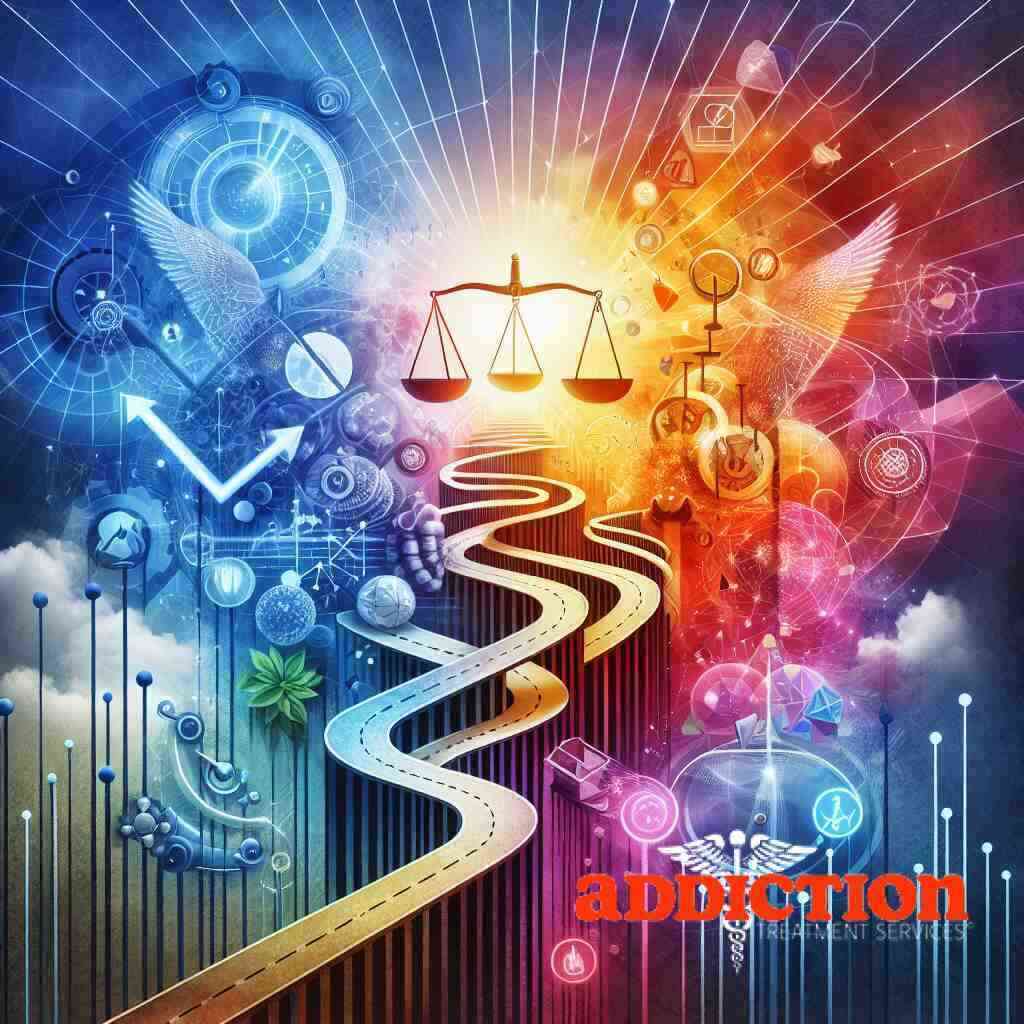 Posted On: 10/24/2024
Posted On: 10/24/2024Navigating the Landscape of Drug Testing Expenses
Understanding the Basics: What is a Drug Test?
A drug test is a scientific analysis designed to detect the presence of drugs or their metabolites in the human body. For a detailed understanding of various drug test types, check the addiction treatment guide. It serves as a crucial tool in various contexts, such as employment screening, criminal justice procedures, and, importantly, substance abuse treatment programs. Drug tests can be performed using samples from different biological sources like urine, blood, saliva, and hair. These tests have become integral in fostering accountability and encouraging abstinence in addiction recovery. As we delve deeper, understanding the role and intricacies of drug testing helps us appreciate its value in safeguarding health and well-being.
Factors Impacting Drug Test Costs: An Overview
The cost of drug testing is influenced by several factors, ranging from the type of test administered to the complexities of analysis required. Simpler tests, such as urine tests, are generally less expensive compared to more sophisticated procedures like blood tests. The diversity of drugs being tested also affects pricing; comprehensive panels typically cost more than basic ones. Geographic location can also play a role, as regional differences might impact operational costs. Drug testing expenses in Georgia, for instance, may differ from those in other states due to local cost dynamics. This multifaceted pricing structure requires careful consideration when budgeting for drug testing in various settings.
The Importance of Drug Testing in Addiction Treatment Services
Drug testing holds significant importance within addiction treatment services, acting as a crucial checkpoint in the recovery process. Regular testing helps in monitoring compliance and progress, providing vital data that informs treatment adjustments. More than just a deterrent against relapse, it enhances accountability and credibility within treatment programs. By reassuring family members and treatment providers, drug testing supports a safe and supportive environment for individuals struggling with substance use disorders. Incorporating drug testing into holistic addiction treatment further integrates these measures into a comprehensive recovery plan, ensuring that individuals receive well-rounded care on their path to sobriety.
Decoding Drug Test Costs: What Should You Expect?
Types of Drug Tests and Their Price Range
When considering drug testing, understanding the types of drug tests and their respective price range is crucial. Commonly used drug tests include urine, saliva, hair, and blood tests, each varying in complexity and cost. Urine drug tests, the most prevalent type, generally cost less compared to other methods due to their simplicity and quick results. Meanwhile, saliva tests offer similar affordability benefits but might incur slightly higher expenses because of their growing popularity in non-invasive testing environments. Hair tests are more costly, though they offer the benefit of a longer detection window, making them appealing for comprehensive screening needs. Finally, blood tests represent the upper end of the pricing spectrum, offering precise data and specific detection capabilities. Understanding these differences provides a clearer picture of cost implications across various scenarios.
Cost Analysis of Drug Test: Breaking Down the Expenses
A thorough cost analysis of drug test expenses involves evaluating both direct and indirect factors. Direct costs typically cover the actual testing procedure, equipment, and laboratory fees. A thorough exploration of these components illuminates the inherent variability in drug testing costs in New York compared to other states, driven by local economic conditions and lab availability. Indirect expenses might surprise many, encompassing logistical costs like transportation, administrative fees, and personnel supervision needed for sample collection. These hidden fees can significantly inflate the perceived basic cost, requiring careful budget planning for accurate financial forecasting, as discussed in our cost management guide. Comparing different test types, as done in this guide, highlights critical aspects, guiding decisions that balance precision and affordability in drug testing endeavors.
Hidden Costs: Beyond the Basic Drug Test Fees
Exploring drug testing costs necessitates looking beyond basic procedures, as hidden costs often lurk beneath the surface. Consider the logistical complexities, including personnel training for accurate sample acquisition and the infrastructural needs for safe storage and transportation. Additionally, unforeseen retesting fees might arise from necessary confirmatory tests, especially after encountering contested results. Such confirmatory tests can incur significant expenses beyond initial expectations. Moreover, insurance implications- such as gaps in coverage or specific co-pays- should not be overlooked, impacting the overall financial burden on individuals and organizations. Engaging with programs offering financial aid for drug tests offers a financial safety net, helping mitigate hidden costs and ensuring cost-effective access to comprehensive drug testing resources.
Exploring Cost-Effective and Budget-Friendly Drug Testing Solutions
Affordable Drug Testing Options: Finding the Right Balance
In the search for affordable drug testing, understanding how to balance cost and quality can make a significant difference. Organizations and individuals must weigh initial drug testing expenses against long-term benefits, ensuring tests meet necessary standards while remaining budget-friendly. Geographic location plays a crucial role, with options like affordable drug testing in Texas offering competitive pricing. Similarly, leveraging drug testing panels that effectively cover required substances without unnecessary additions can create cost savings. Partnerships with community health providers often reveal discounts and financial assistance programs, reducing the financial burden of consistent drug monitoring.
Innovative Approaches to Reducing Drug Testing Expenses
Emerging technologies and methodologies have begun reshaping the landscape of drug testing, delivering innovative solutions that promise both efficiency and cost reduction. For instance, integrated digital platforms streamline testing procedures, cutting down on person-hours and paperwork. Strategies like pooled testing, where multiple samples are analyzed in one test, can drastically decrease costs in environments with low positive rates. Collaborations with third-party providers in states like California ensure budget-friendly drug test management, broadening access to resources. Furthermore, leveraging mobile testing units offers the convenience of on-site testing, negating travel expenses and enhancing logistical efficiency.
Comparing Prices: Inexpensive Drug Tests versus Premium Options
The decision between selecting inexpensive drug tests and opting for premium testing solutions is central to managing budget constraints effectively. Inexpensive drug screening in Indiana, for instance, offers economical alternatives without significant quality sacrifices. While lower-cost options provide practicality in routine checks, premium tests might be necessary for sensitive contexts demanding higher accuracy and a broader spectrum of detection. Evaluating the expected outcomes and reliability of results assists in making informed choices between affordability and precision. Organizations should consider long-term cost impacts, where investing in high-quality tests could prevent costly legal issues related to inaccurate or contested results, ultimately reinforcing responsible drug testing practices.
Insurance and Financial Strategies for Drug Testing Affordability
Insurance Coverage and Benefits for Drug Tests
Navigating insurance coverage for drug tests requires careful attention to policy details. Many insurance plans offer benefits that significantly reduce drug testing expenses, contributing to more economical drug detection approaches. These benefits can include copayment reductions, discounted rates through network alliances, and, in some cases, full coverage for specific tests within a treatment program. Understanding the nuances of your policy, including any applicable limitations or exclusions, is essential for leveraging these advantages effectively. By engaging with your provider and exploring potential coverage options, you can alleviate financial strains associated with necessary testing, ensuring that essential services remain within reach during your recovery journey. For detailed insights into maximizing such benefits, the insurance benefits for drug tests guide provides invaluable information.
Financial Aid and Assistance Options for Drug Testing
In situations where insurance falls short, diverse financial aid options exist to cushion the burden of drug testing costs. Many addiction treatment programs offer sliding scale fees, tailoring costs to an individual’s financial capacity, ensuring that testing remains accessible. Public health organizations and nonprofit entities often extend grants or subsidies specifically for these purposes, emphasizing the importance of maintaining consistent drug monitoring without financial hardship. Community initiatives frequently collaborate with local health departments to provide subsidized drug testing, fostering supportive networks that bridge funding gaps. By actively seeking such resources and understanding their eligibility requirements, individuals and families can obtain financial relief and continue focusing on the recovery journey without added stress.
Maximizing Savings: Strategies for Cost-Effective Drug Testing
To truly benefit from cost-effective drug testing, strategic planning is crucial. This involves choosing testing methods that align with the frequency and scope needed for your specific situation, thus avoiding unnecessary expenses. Engaging in bulk purchasing for institutions requiring regular tests can lead to significant cost reductions per test. Seeking partnerships with testing facilities that offer loyalty discounts or long-term agreements can also present savings opportunities. Moreover, integrating testing within broader addiction recovery frameworks ensures that expenses align with overall treatment goals, reducing inefficiencies. Utilizing the insights from the holistic addiction treatment guide, individuals can better align their drug testing strategies with comprehensive care plans, maximizing their resources while ensuring consistent recovery support.
The Bigger Picture: Drug Testing as a Part of Comprehensive Addiction Treatment
Drug Testing’s Role in the Holistic Recovery Process
Drug testing plays a pivotal role in the holistic recovery process from substance use disorders. It acts as a checkpoint, helping individuals maintain accountability throughout their journey. By consistently monitoring substance levels, drug tests provide actionable data for both patients and healthcare professionals, allowing for timely interventions when needed, as elaborated in our guide on outpatient and residential care. These tests anchor recovery plans, complementing therapy and medication-assisted treatment, thereby ensuring that patients remain on track. Furthermore, integrating regular testing into recovery supports relapse prevention strategies, serving as both a deterrent and a guide for continued sobriety efforts. As such, drug testing forms an indispensable part of a well-rounded, comprehensive approach to addiction recovery.
Integration with Other Addiction Treatment Services
Integrating drug testing with other addiction treatment services is essential for maximizing recovery outcomes. Many addiction treatment centers employ a combination of detoxification, behavioral health services, and intensive outpatient programs to address the multifaceted nature of addiction. Drug testing dovetails with these services, offering a scientific measure that supplements therapeutic insights gained through psychotherapy and counseling, aligning with top strategies for addiction recovery. As clients progress through withdrawal symptoms and address the root causes of addiction, regular testing validates their abstinence and adaptability to the treatment regimen. This synergy empowers treatment providers to tailor interventions accurately, ensuring that the challenges of substance misuse are holistically managed within an interconnected service framework.
Future Trends and Innovations in Drug Testing within Addiction Treatment
The landscape of drug testing in addiction treatment is ripe for innovation, promising more precise and accessible methods. Future trends point towards advancements such as real-time drug monitoring and digital integration with health platforms, providing enhanced data insights and convenience for both patients and clinicians, as detailed in addiction treatment trends. Emerging technologies aim to minimize invasive procedures, offering alternative methods that align with the needs of modern treatment processes. As these innovations unfold, collaborations with fields like genetic testing and biomarkers could revolutionize personalized treatment pathways, optimizing the drug rehabilitation process. Staying informed about these trends ensures that addiction treatment services remain at the forefront of comprehensive care, constantly improving strategies to support individuals through recovery.
Conclusion: Your Path to Informed Decisions and Affordable Drug Testing
Recap: Key Insights on Financial Considerations
Navigating the cost landscape of drug testing can be complex, yet understanding financial considerations proves invaluable. Insightful analysis of various drug test types aids in planning for expenses and keeping within a budget. Evaluating hidden costs, such as logistical expenses and insurance implications, allows for a more comprehensive view of drug test investments. By understanding key financial elements, individuals and organizations can better forecast drug testing expenditures, ensuring expenses align with available resources without compromising the integrity of addiction treatment services.
Empowering Your Journey with Informed Choices
Making informed choices empowers you on the path to cost-effective drug testing in addiction recovery. By balancing affordability with quality and leveraging insurance benefits, you ensure that drug testing remains both accessible and effective. Embracing community resources and seeking financial aid reduces the burden of testing fees, offering peace of mind during this critical phase. Collaborating with treatment facilities provides additional support, fortifying recovery strategies with consistent and reliable drug monitoring. Such informed decision-making significantly contributes to the effectiveness of addiction recovery journeys, supporting ongoing sobriety with financial mindfulness.
The Road Ahead: Continued Support and Resources
The journey toward comprehensive addiction recovery involves continuous support and resource availability. As addiction treatment services evolve, they offer expanded tools and innovative strategies for managing drug testing costs. Engaging with resources like drug testing in addiction recovery keeps individuals abreast of current trends, maximizing recovery outcomes. Stay informed about financial tools, evolving insurance coverage, and community initiatives to maintain budget-friendly testing. This proactive approach not only enhances recovery experiences but also reinforces the vital support networks around you, ensuring continued progress on the path to sobriety.
Frequently Asked Questions
Question: What factors influence the cost of drug screening when looking for addiction treatment services near me?
Answer: Many factors contribute to the cost of drug screening. The type of test is a primary consideration, with urine tests being generally more affordable than hair or blood tests. The drugs included in the screening panel also affect pricing, as comprehensive screenings testing for multiple substances are more costly. Additionally, the geographic location can influence the overall drug testing fee due to regional differences in operational costs. For a detailed breakdown, referencing the cost analysis of different drug test types can guide you in making budget-friendly decisions while considering addiction treatment services near you.
Question: How does insurance coverage impact drug testing pricing as part of addiction treatment services?
Answer: Insurance coverage can substantially reduce the financial burden of drug testing expenses. Many insurance plans offer benefits such as reduced copayments or fully covered tests, particularly when they form part of structured addiction treatment programs. However, precise coverage details can vary, so it’s crucial to review your policy to understand relevant exclusions or limitations. Engaging with your insurer ensures you can leverage these benefits effectively, supporting more affordable drug screening as part of your addiction recovery pathway.
Question: In the blog titled How Much Does a Drug Test Cost? what are some cost-effective drug screening solutions available?
Answer: Cost-effective drug screening solutions may include selecting the most appropriate testing method tailored to your needs. Opting for urine or saliva tests typically offers a balanced approach between cost and accuracy. Additionally, exploring partnerships with community health providers often reveals access to discounted rates and financial assistance programs. Consider locations offering affordable drug testing, such as addiction treatment services in Florida, where geographic pricing advantages exist. Understanding these economic options ensures you maintain budget-friendly drug testing practices without compromising on quality.
Question: Are there financial aid options for individuals concerned about drug test expenses during addiction treatment?
Answer: Yes, numerous financial aid options exist for those worried about drug test expenses. Many addiction treatment programs provide sliding scale fees based on financial capability, ensuring accessibility to necessary tests. Public health organizations and nonprofits often fund subsidies or grants dedicated to maintaining consistent drug monitoring. By consulting with local community initiatives, you can find avenues to facilitate affordable drug testing, thereby supporting your recovery journey without incurring excessive financial stress.
Question: How do future trends in drug testing potentially impact the pricing structures for addiction treatment services?
Answer: Emerging trends in drug testing technologies may reshape future pricing structures, presenting opportunities for cost efficiency and precision. Innovations such as real-time monitoring and digital integration are expected to streamline processes, potentially reducing logistical and administrative costs. This evolution may bring about a shift towards more accessible and less invasive testing methods, influencing both cost and adoption rates within addiction treatment services. Staying current with these trends allows you to optimize your financial considerations around drug testing, with a focus on leveraging the most effective and economical solutions in your recovery plan.




